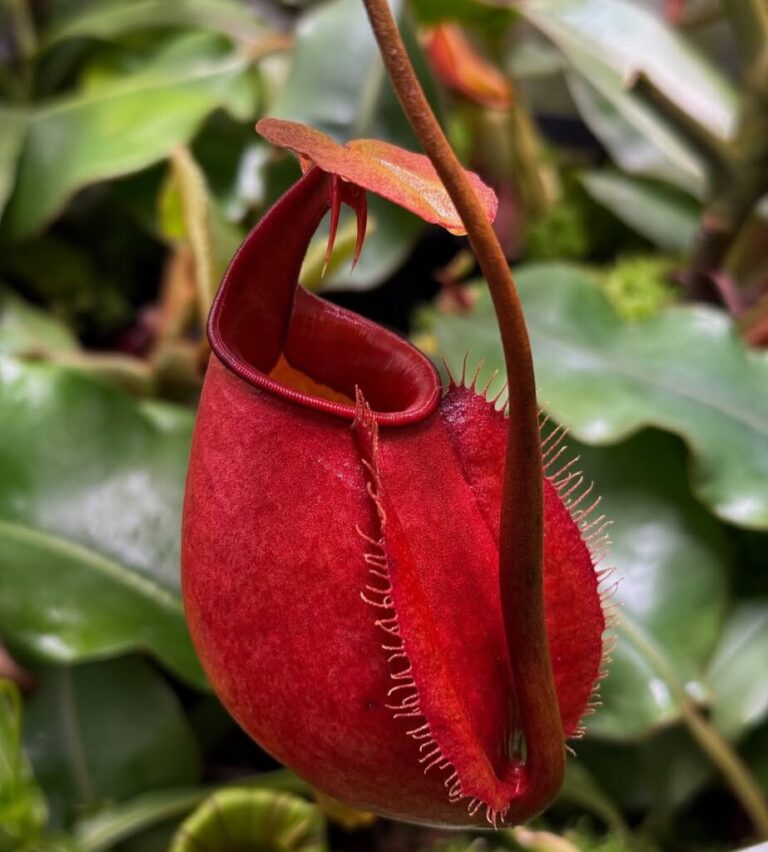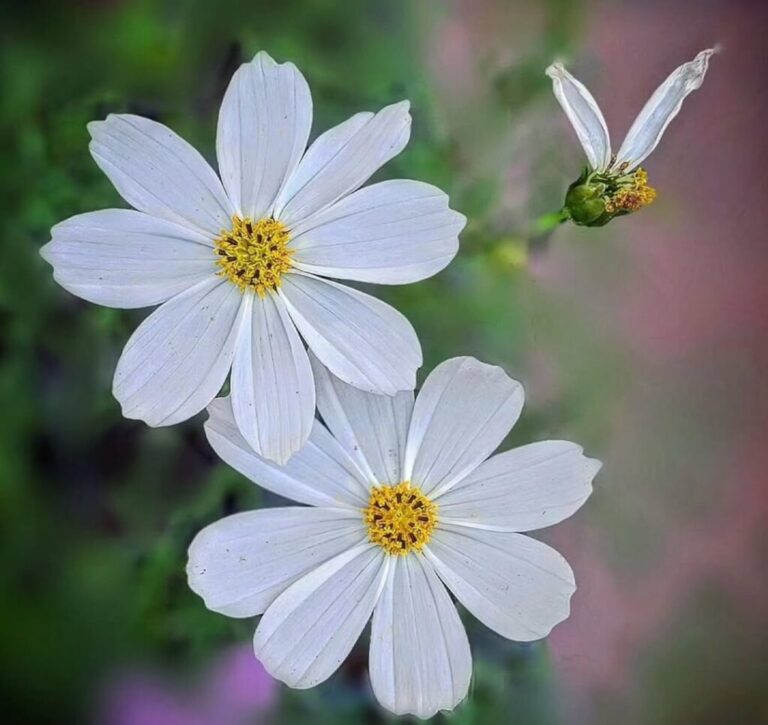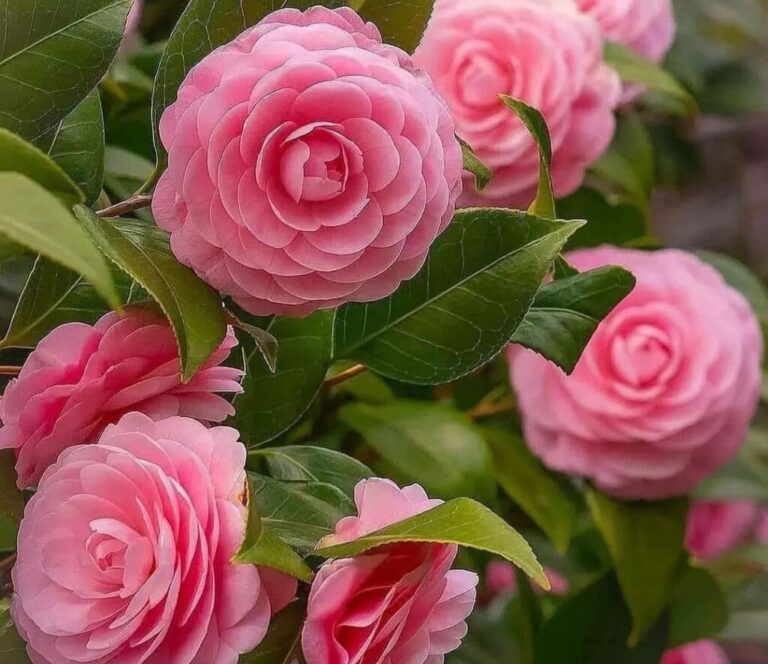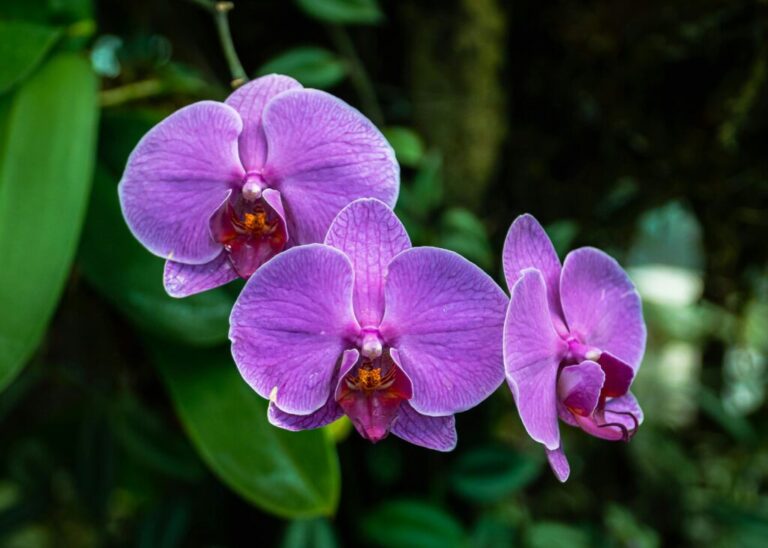Carnivorous plants like the Venus flytrap (Dionaea muscipula) and pitcher plants (Sarracenia, Nepenthes, Darlingtonia) are some of nature’s most fascinating species. Their ability to trap and digest insects makes them a favorite among plant lovers. However, their care requires attention to specific needs such as soil type, watering habits, and seasonal changes.
While these plants might seem exotic and difficult to grow, they can thrive with the right approach. Understanding their natural habitats and mimicking those conditions at home is key to long-term success. Whether you choose a Venus flytrap or a pitcher plant, following this 10-step guide will ensure your plant remains healthy, vibrant, and actively catching prey.

- 1 Venus Flytrap & Pitcher Plant
- 2 10-Step Care Guide for Venus Flytraps & Pitcher Plants
- 3 1. Choose the Right Pot & Soil
- 4 2. Provide Adequate Sunlight
- 5 3. Use Distilled or Rainwater Only
- 6 4. Maintain Proper Humidity
- 7 5. Keep the Soil Moist, Not Soggy
- 8 6. Avoid Overfeeding – Insects Only!
- 9 7. Ensure Proper Air Circulation
- 10 8. Repot Every 1-2 Years
- 11 9. Understand Dormancy Needs
- 12 10. Watch for Pests & Diseases
- 13 FAQS
Venus Flytrap & Pitcher Plant
| Feature | Venus Flytrap (Dionaea muscipula) | Pitcher Plant (Sarracenia/Nepenthes) |
|---|---|---|
| Native Habitat | Wetlands of North & South Carolina, USA | Sarracenia: North America Nepenthes: Tropical Asia |
| Trap Mechanism | Snap-trap (hinged leaves close on prey) | Passive pitfall trap (liquid-filled pitcher) |
| Sunlight Needs | 6+ hours of direct sunlight | Sarracenia: Full sun (6+ hours) Nepenthes: Bright indirect to partial sun |
| Watering | Distilled/rainwater only Keep soil moist but not soggy | Distilled/rainwater only Sarracenia: Tray method Nepenthes: Top watering with good drainage |
| Dormancy | Requires winter dormancy (35–50°F for 3-4 months) | Sarracenia: Requires dormancy Nepenthes: No dormancy needed |
| Humidity | Moderate to high (50–70%) | Sarracenia: Moderate (50–60%) Nepenthes: High (70–90%) |
| Feeding | Live or dried insects (once a month) | Sarracenia: Traps insects naturally Nepenthes: Occasional feeding if indoors |
| Growth Season | Spring to early fall | Sarracenia: Spring to fall Nepenthes: Year-round in warm conditions |
| Repotting | Every 1-2 years in early spring | Every 2-3 years when needed |
| Best Pot Type | Plastic or glazed ceramic with drainage | Plastic, glazed ceramic, or hanging basket for Nepenthes |
| Common Issues | Root rot from overwatering Weak traps from low light | Sarracenia: Fungal infections in low light Nepenthes: Pitcher loss due to low humidity |
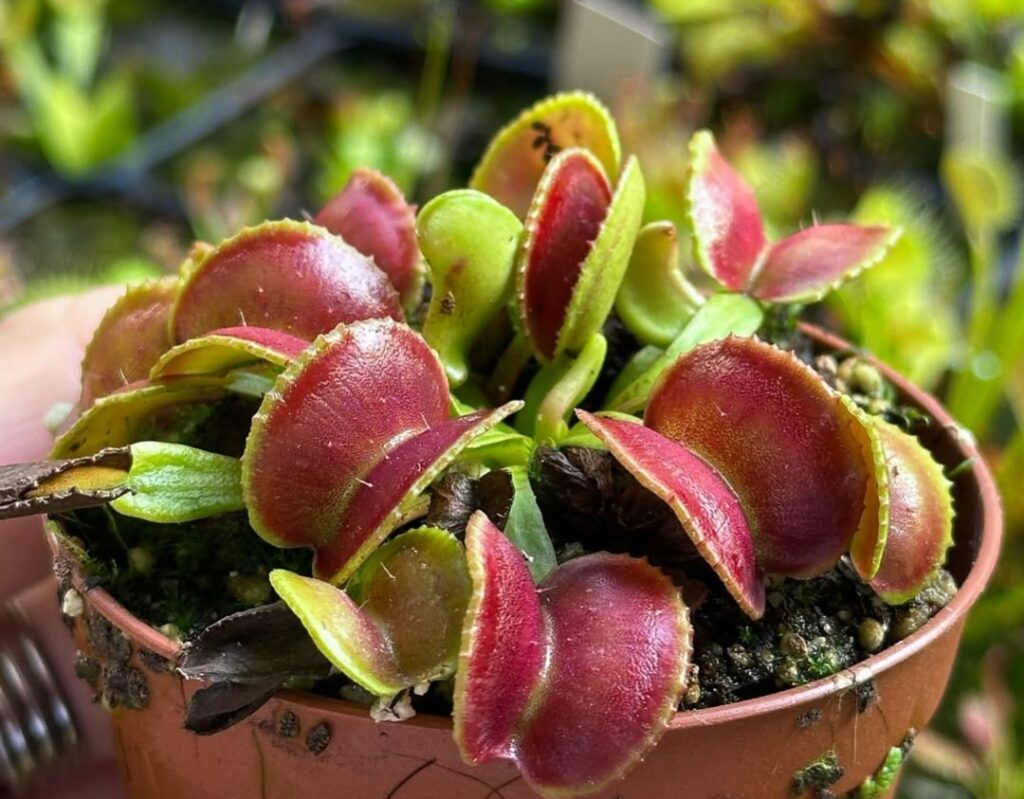
10-Step Care Guide for Venus Flytraps & Pitcher Plants
1. Choose the Right Pot & Soil
Venus flytraps and pitcher plants thrive in soil that is poor in nutrients but retains moisture. A 50:50 mix of sphagnum peat moss and perlite is ideal for Venus flytraps and North American pitcher plants (Sarracenia). This ensures proper aeration and drainage while keeping the roots hydrated. For tropical pitcher plants (Nepenthes), use a mix of long-fiber sphagnum moss and orchid bark, which allows for better moisture retention and prevents root rot. Never use regular potting soil, compost, or fertilizers, as these will damage the plants by providing excessive nutrients that they are not adapted to process.
2. Provide Adequate Sunlight
Both Venus flytraps and pitcher plants require strong light to grow well and develop vibrant traps. Venus flytraps and Sarracenia pitcher plants need at least 6 hours of direct sunlight daily, which makes them ideal candidates for outdoor growing. If growing indoors, placing them near a bright, south-facing window is best. Tropical pitcher plants (Nepenthes) prefer bright indirect light, as direct sunlight can scorch their delicate leaves. If natural light is insufficient, using LED grow lights with a balanced spectrum can help promote healthy growth and strong trap formation.
3. Use Distilled or Rainwater Only
One of the most important rules in carnivorous plant care is to never use tap water, as it contains minerals that can harm their delicate roots. The best water sources are distilled water, rainwater, or reverse osmosis (RO) water, which are free of harmful minerals. Watering should be consistent to keep the soil moist but not waterlogged. For Venus flytraps and Sarracenia, use the tray method by placing a shallow dish under the pot and keeping about half an inch of water in it. For Nepenthes, water from the top and ensure excess drains out completely to prevent rot.
4. Maintain Proper Humidity
Humidity is another critical factor in keeping carnivorous plants healthy, especially for pitcher plants. Venus flytraps and Sarracenia prefer moderate humidity levels of 50–60%, which is typically available in most homes with regular misting or a humidity tray. Nepenthes, however, require much higher humidity levels of 70–90%, which may require the use of a humidifier or terrarium setup indoors. Low humidity can cause pitcher plants to stop producing traps, while excessively dry air can lead to shriveled leaves and poor growth.
5. Keep the Soil Moist, Not Soggy
Carnivorous plants need consistently moist soil, but excessive water can cause root rot. The best method for Venus flytraps and Sarracenia is the tray method, where a small amount of water is kept in a saucer beneath the pot. However, allow the tray to dry out occasionally to prevent mold growth. Nepenthes prefer top watering, allowing water to drain freely, mimicking their natural environment where rain regularly flushes their roots. Avoid letting the soil dry out completely, as this can weaken the plant and cause leaves or traps to die off prematurely.
6. Avoid Overfeeding – Insects Only!
Carnivorous plants have evolved to catch insects, and feeding them properly ensures they get enough nutrients without harming the plant. Venus flytraps only need to be fed once a month with a live or dried insect, like crickets or mealworms. Pitcher plants can catch their own prey, but if grown indoors, an occasional insect dropped into the pitcher will suffice. Never feed carnivorous plants human food such as meat, cheese, or processed items, as these will rot inside the traps and cause bacterial infections. Overfeeding can also exhaust the plant’s energy, leading to weak growth.
7. Ensure Proper Air Circulation
Good airflow is essential to prevent fungal infections, mold, and stagnant conditions around the plant. If grown indoors, place your plant in a well-ventilated area with some natural air movement. Stale air can cause problems such as mold on the soil or weakened traps. Outdoor placement provides natural airflow, but if indoors, a small fan or keeping a window slightly open can help. Pitcher plants like Nepenthes particularly benefit from good airflow since they grow in tropical environments where breezes help keep humidity balanced.
8. Repot Every 1-2 Years
Repotting is crucial to refresh the soil and prevent compaction. Venus flytraps and Sarracenia pitcher plants should be repotted every 1–2 years in early spring, before active growth resumes. Use fresh carnivorous plant soil and a plastic or glazed ceramic pot, as unglazed terracotta can absorb minerals that harm the plant. Nepenthes can stay in the same pot longer but should be repotted if growth slows or the soil becomes degraded. Choose a pot with drainage holes to prevent water buildup, as stagnant water can lead to root rot.
9. Understand Dormancy Needs
Understanding dormancy is key to long-term survival. Venus flytraps and Sarracenia pitcher plants require a 3–4 month winter dormancy period (from late fall to early spring) where they experience colder temperatures (35–50°F) and reduced growth. Traps may die back, but this is normal, and new growth will emerge in spring. Nepenthes do not require dormancy and should be kept warm year-round. If you live in a colder climate, consider placing Venus flytraps and Sarracenia in an unheated garage or fridge dormancy method to simulate their natural winter conditions.
10. Watch for Pests & Diseases
Carnivorous plants are relatively pest-resistant, but they can still be affected by common plant pests. Aphids and spider mites are the most common issues, especially in warm indoor environments. Use insecticidal soap or neem oil sparingly to treat infestations. Fungal infections can occur if the plant is too wet with poor air circulation, leading to blackened traps or mold on the soil. Regularly inspect the plant for signs of distress, and adjust conditions accordingly to keep it healthy and thriving.
Growing Venus flytraps and pitcher plants is an exciting experience, offering both beauty and natural pest control in your home or garden. With proper sunlight, moisture, and seasonal care, these plants will reward you with healthy growth and active traps. Whether you’re drawn to the snap traps of a Venus flytrap or the elegant pitchers of a Nepenthes, following these 10 expert care steps will ensure your carnivorous plant thrives for years to come.
FAQS
How is a Venus flytrap different from a pitcher plant?
A Venus Flytrap Pitcher Plant consists of two unique carnivorous plants. The Venus Flytrap captures prey with a snap-trap mechanism, where its leaves close quickly when triggered. Pitcher Plants, on the other hand, use deep liquid-filled pitchers to lure, trap, and digest insects passively, making them fascinating yet different insect-eating plants.
Do Venus Flytrap Pitcher Plants need direct sunlight?
Yes! A Venus Flytrap Pitcher Plant needs at least 6 hours of direct sunlight every day. Without sufficient sunlight, the plant’s traps will weaken, turn black, and eventually die. If grown indoors, placing them near a bright south-facing window or using strong grow lights can help them thrive.
What kind of water should I use for my Venus Flytrap Pitcher Plant?
A Venus Flytrap Pitcher Plant is highly sensitive to minerals found in tap water. Always use distilled, rainwater, or reverse osmosis water to keep the plant healthy. Mineral-heavy water can cause salt buildup in the soil, which leads to root damage, poor growth, and eventually, the plant’s death
How often should I water my Venus Flytrap Pitcher Plant?
Watering a Venus Flytrap Pitcher Plant depends on humidity and temperature. Keep the soil moist but not soggy by watering every few days using a tray method for pitcher plants or top watering for Venus flytraps. Avoid overwatering, as waterlogged conditions can lead to dangerous root rot and fungal infections.
Do Venus Flytrap Pitcher Plants need fertilizer?
No, a Venus Flytrap Pitcher Plant does not require fertilizer because they naturally absorb nutrients from insects. Adding fertilizer can damage their roots and cause abnormal growth. Instead, ensure they receive enough sunlight and insects to sustain their energy. If needed, occasional foliar feeding with diluted orchid fertilizer can help pitcher plants
Can I feed my Venus Flytrap Pitcher Plant human food?
No, you should never feed a Venus Flytrap Pitcher Plant human food like meat, cheese, or bread. These plants can only digest small live or dried insects, such as flies, ants, or mealworms. Human food can rot inside their traps, leading to bacterial infections and the death of the plant
How often should I feed my Venus Flytrap Pitcher Plant?
A Venus Flytrap Pitcher Plant should be fed once every 2-4 weeks. Feeding too often can exhaust the plant, while not feeding at all may lead to slow growth. If the plant is outdoors, it will catch its own prey. Indoor plants may require manual feeding with small live insects.
Do Venus Flytrap Pitcher Plants need high humidity?
Yes, a Venus Flytrap Pitcher Plant thrives in 50–80% humidity, with pitcher plants like Nepenthes needing even higher humidity levels. Low humidity can cause Venus flytrap leaves to dry out and pitcher plants to stop forming pitchers. Using a humidity tray, misting, or placing them in a terrarium can help maintain moisture.
Why is my Venus Flytrap Pitcher Plant turning black?
If your Venus Flytrap Pitcher Plant turns black, it could be due to overfeeding, lack of light, improper watering, or natural trap aging. Traps naturally die after catching several insects. However, if the entire plant is turning black, it may be suffering from root rot, poor growing conditions, or dormancy-related stress.
How do I care for a Venus Flytrap Pitcher Plant in winter?
A Venus Flytrap Pitcher Plant requires a dormancy period in winter. Venus Flytraps need 35–50°F temperatures for 3-4 months and should be kept in a cool location like an unheated garage or fridge. Sarracenia pitcher plants also go dormant, but Nepenthes require warm temperatures and should be kept indoors year-round
Can I grow a Venus Flytrap Pitcher Plant indoors?
Yes, but a Venus Flytrap Pitcher Plant needs a sunny south-facing window or strong grow lights to survive indoors. Venus Flytraps require intense direct light, while Nepenthes pitcher plants do well in terrariums with high humidity. Without proper lighting, these plants may weaken, fail to produce traps, and eventually decline.
What type of soil is best for a Venus Flytrap Pitcher Plant?
A Venus Flytrap Pitcher Plant requires nutrient-poor, well-draining soil. The best mix is sphagnum moss and perlite or peat moss and sand in a 50:50 ratio. Never use regular potting soil, compost, or fertilizer-enriched substrates, as they contain minerals that can harm the plant’s delicate roots.
Can I propagate a Venus Flytrap Pitcher Plant?
Yes, a Venus Flytrap Pitcher Plant can be propagated through division or leaf pullings. Venus flytraps produce small offshoots (pups) that can be separated and replanted. Sarracenia pitcher plants can be divided at the rhizome, while Nepenthes can be propagated from stem cuttings or seeds with high humidity.
Do Venus Flytrap Pitcher Plants need repotting?
Yes, a Venus Flytrap Pitcher Plant should be repotted every 1–2 years using fresh carnivorous plant soil. Repotting prevents soil compaction and mineral buildup, ensuring proper drainage and healthy growth. Nepenthes pitcher plants need repotting every 2-3 years, while Sarracenia can be repotted every few years during dormancy.
Where can I buy a Venus Flytrap Pitcher Plant?
You can purchase a Venus Flytrap Pitcher Plant from nurseries, online plant stores, botanical gardens, and specialized carnivorous plant shops. Always buy from reputable sellers to ensure a healthy, pest-free plant. Avoid plants sold in sealed containers, as they may not have proper ventilation or drainage.


